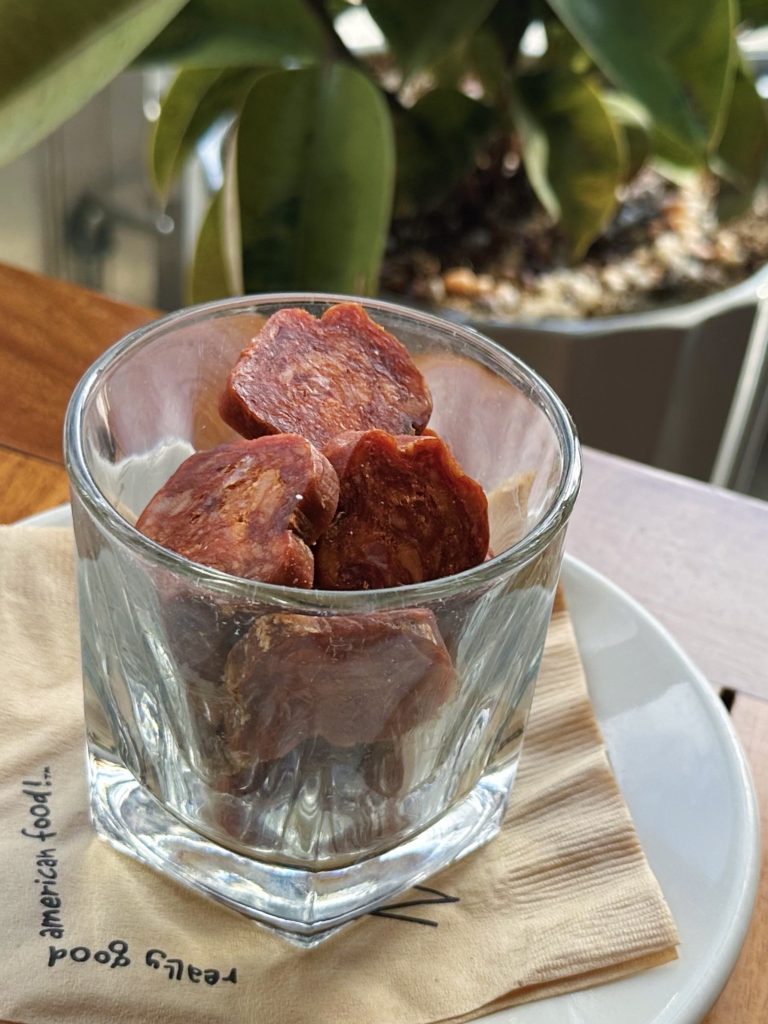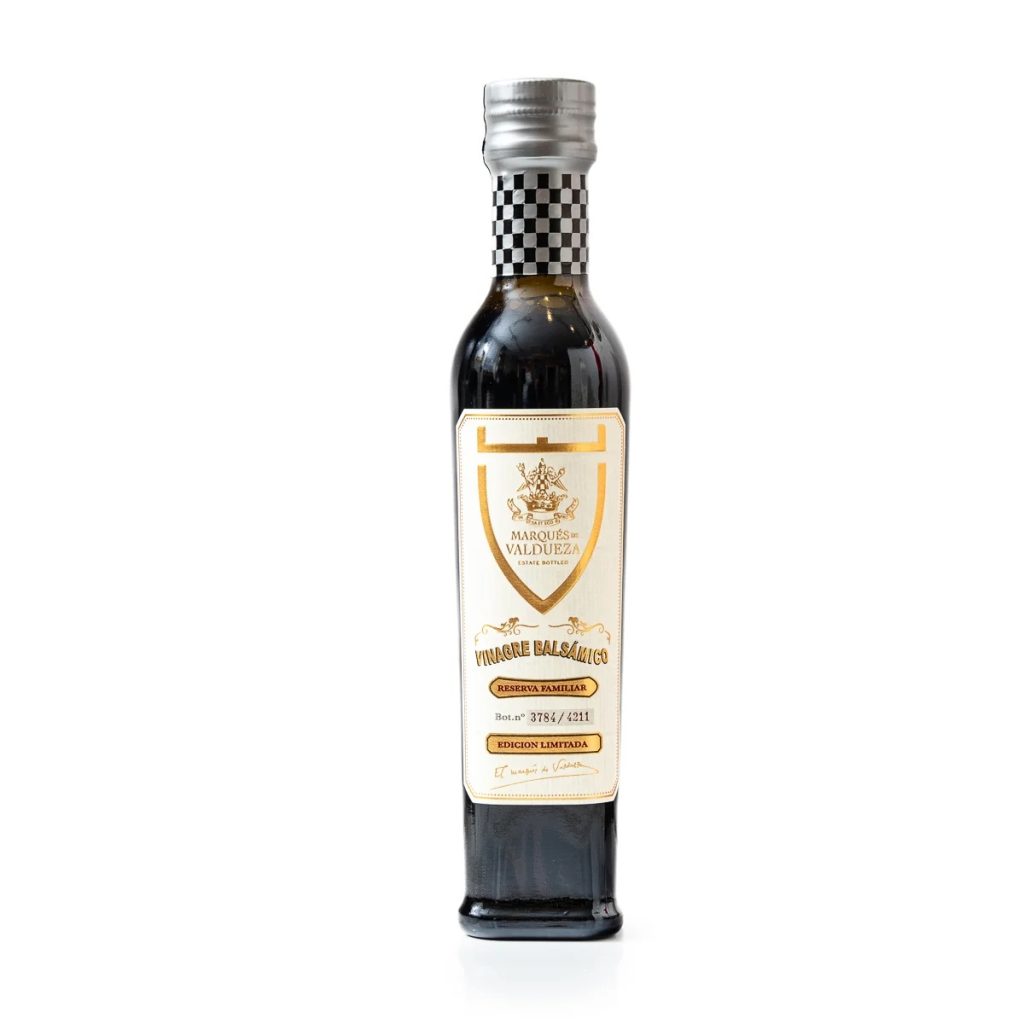Flavorful Artisan Chorizo Appetizer at the Roadhouse

Super tasty and cured by a longtime friend!
The food section of the New York Times shared a then-cutting-edge insight into the centuries-old tapas culture of Spain 40 years ago next week. “SPAIN’S TAPAS BECOMING INTERNATIONAL!” the headline announced. The article, by food writer Moira Hodgson, referenced the then-new work of author Penelope Casas. Casas’ classic, The Foods and Wines of Spain, came out in 1982, the year we opened the Deli. With her informative insights in hand, the traditional foods of Spain entered into the Zingerman’s ecosystem. Her next book, Tapas: The Little Dishes of Spain, came out 40 years ago this year, in 1985. Around that time, we got to know Penelope personally when she came to Ann Arbor to teach classes on Spanish cooking at the Deli. Without question, she was at the cutting edge of introducing authentic regional Spanish food to American audiences.
All these years later, we’re excited to offer an amazing American-made artisan chorizo, crafted true to the Spanish style by Charles Wekselbaum and the crew at Charlito’s Cocina! Back in the ’80s, there was nothing close to this quality level being made in the U.S. One had to go to Spain to enjoy it. Today, we live in a wonderful and completely different culinary world.
Chorizo, as you and I eat it today, most likely originated in the 17th century. It was, historically, the first “tapa.” Slices of it were used to cover glasses of sherry and, so the story goes, to keep the flies out. It remains hugely popular. Native Spanish Tapas says that the “best Spanish tapa in Madrid is undoubtedly CHORIZO, yes, Spanish zesty pork-sausage!” This is the way it is when you eat out in Spain. Small plates of sliced chorizo are everywhere. This means that although the newest addition to the Roadhouse’s appetizer list may seem novel to some in southeastern Michigan, anyone who has been to Madrid or anywhere else in Spain will know that chorizo’s presence is ubiquitous.
The quality of this cured chorizo is truly special, and what’s on the Roadhouse’s menu right now is exceptional. Charles Wekselbaum has spent nearly a quarter-century studying traditional curing techniques. He is also, as we are here, determined to use exceptional raw materials. We both understand that it’s pretty much impossible to make amazing food out of so-so ingredients. For the Spanish chorizo, Charles and crew begin with heritage breed, Animal Welfare Certified pork. Charles spices it with Pimentón de la Vera—the remarkable, denomination-of-origin-controlled, oak-smoked paprika from western Spain—sea salt, and a very gentle bit of fresh garlic, curing salts, and that’s pretty much it. Careful curing, time, and natural molds (similar to those on cheese) do the rest of the work. The flavor is truly fantastic—clean, complex, and mouth-filling, with a fantastic long finish.
You can nibble the chorizo on its own, sip some wine, beer, or a cocktail. Great, too, alongside a plate of Bakehouse bread with Vermont Creamery Cultured Butter, a glass of single-origin peanuts, or a couple of choices off the cheese list. A 2-ounce portion is plenty for two people, even three, though, to be honest, I ate a whole half-portion the other evening on my own. The 4-ounce would be more for a four- or six-top, though your appetite will dictate how far it goes. The good news is you can always order another round.
Although Charlito’s Cocina and Charles himself are both in New York City, his family’s roots, at least in our era, in Cuba, and before that, Eastern Europe. His grandfather came from the town now known as Pruzhany, the same town where the Torah scholar Joseph Soloveitchik was born. The 10,000 or so Jews who did not leave around the time that Charles’ grandfather did were all murdered by the Nazis in 1941. When he decided to cross the Atlantic, Charles’ grandfather’s intention was to come to the U.S., but he wasn’t able to get in, so he diverted to Cuba as a short-term solution. He ended up in a small Cuban town called Colon (as in Christopher Colon) on the northern end of the island, At the time, his was the only Jewish family in town. Soon after, he heard that a second Jewish family had arrived in the area from Warsaw. That family included Charles’ grandmother.
The first Jewish presence on Cuba may have come 400 years earlier, in the form of one of Columbus’s original crew, Luis de Torres, a converso (a secret Jew, pretending to be a Christian in the autocratic setting of 15th-century Spain, where being anything but Catholic put one at risk). Most of the Jewish community in Cuba, though, came much later. A number of American Jews began to go there in the latter years of the 19th century. By 1924, there were nearly 25,000 Jews on the island. The American Immigration Act of 1924 closed borders to most refugees seeking asylum and made it much harder for many Jews fleeing persecution in Europe to get into the U.S. This increased the Cuban Jewish population still further. Then the vast majority of them left Cuba before 1959, when the Cuban Revolution began, and in the years that followed.
And now, thanks to his grandparents and parents, we have Charles Wekselbaum in New York, where he started his small craft salami company in 2011. Charles has long been a generous supporter of what we do in the ZCoB, so I’m especially happy that we can return the favor by featuring his chorizo at the Roadhouse. Here’s what Charles shares about his own passion for cured meats:
I was fascinated by the process of transformation, how I could turn a highly perishable food—raw meat—into something that does the opposite of perishing, by leaving it in the zone in which it is most prone to perishing. It is a way of elevating the food into something completely different than it was to begin with, something delicious and beautiful. It is a true triumph of human ingenuity!
I keep that in mind every time I savor a small slice!



